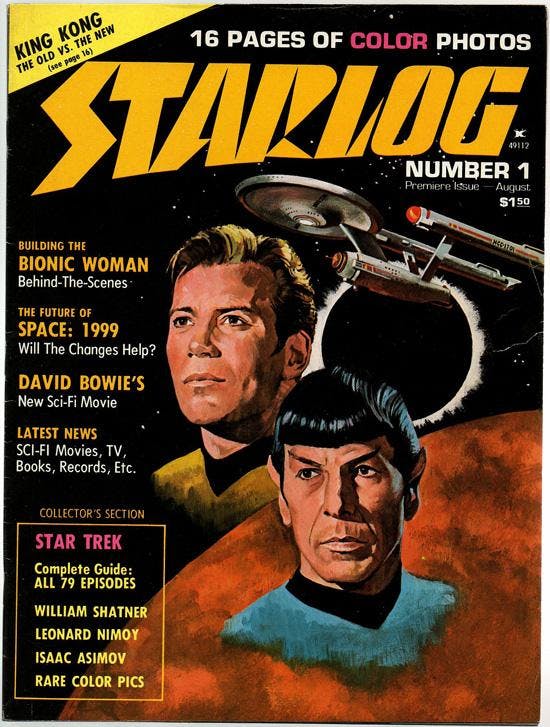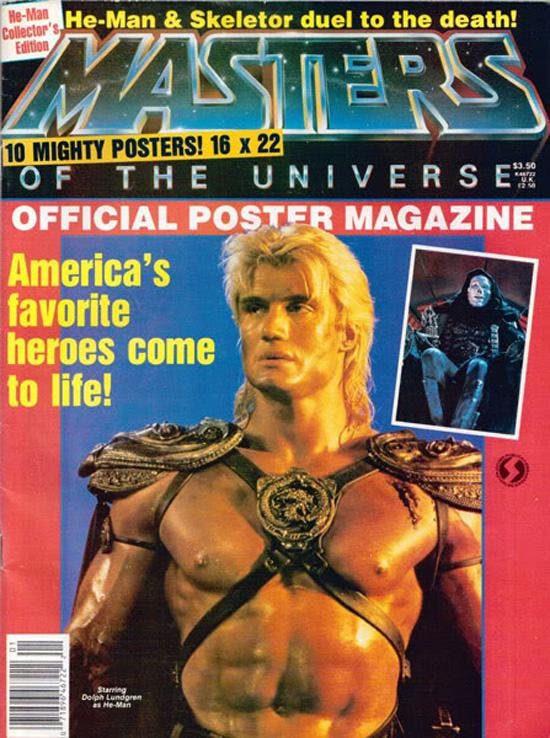Published Dec 17, 2014
The TV & Radio Shows That Weren't, And Other Near Misses
The TV & Radio Shows That Weren't, And Other Near Misses

We’re all fascinated with what might have been. If we had just made another choice or events had come to some other conclusion, then everything would be different. Not necessarily better, just strangely different.For example, in 1983 or ’84, Starlog Magazine Publisher Kerry O’Quinn dropped by the office shared by Editor Howard Zimmerman and me (then Managing Editor). O’Quinn was extremely excited. And he explained why. Starlog was going to be part of the TV series Real People. Don’t remember that pioneering reality show? John Barbour and Sarah Purcell hosted, presenting funny and sentimental human interest stories (on videotape) to a live studio audience. Emmy winner George Schlatter—best known for co-creating Rowan & Martin’s Laugh-In—produced it. O’Quinn had talked to staffers at the series, maybe even Schlatter. This "Starlog People" segment was intended to profile our readers—primarily Star Trek and Star Wars fans—who loved science fiction and who (in O’Quinn’s words) were changing lives by "reaching for the stars." It would, of course, raise the magazine’s visibility and possibly increase Starlog readership. And it might further refute unfortunate stereotypes associated with fangirls, geeks and nerds. Sounds too good to be true, eh?Yep, it was. Because the deal was to kick in as part of Real People’s next season. So, of course, before the fading former hit could be overhauled and our segment added, NBC cancelled it that season. Farewell, ever unseen, to "Starlog People."Over the years, I became accustomed to these greatest things that never happened. We learned to avoid broken hearts and injured egos by not getting too attached to promised developments. There were any number of these unrealized prospects: projects that didn’t bear fruit (like the "audiotape magazine" version of Starlog, filled with the sound of interviews), licensed magazines we didn’t end up publishing (Conan the Barbarian, Indiana Jones and the Last Crusade), covers we tried to do but didn’t (The Princess Bride, The Abyss). It was maddening.

Speaking of that, Starlog actually began back in June 1976 with covers painted by Mad Magazine veteran Jack Rickard in a straight style (Starlog #1, cover-dated August), then comedically (#3). Rickard, incidentally, spoofed the genre with a dancing Kirk and singing Spock (Mad #186’s cover, also in ’76) and Star Wars musical fun (Mad #203 in 1978). After an early run of seriously artistic covers, Starlog Publishers O’Quinn and Norman Jacobs decided to go with photographic covers instead (cheaper and easier to execute, better-selling). Art was out.Sadly, after I became Editor in 1985, I only ever got to commission art for just one cover—Starlog Yearbook #15, a reprint collection of Babylon 5 and X-Files stories with dual, dueling flipbook covers (a B5 cast photo on one side, flip over to the other for a Mulder & Scully caricaturefest by Mad-influenced Starlog cartoonist Tom Holtkamp). Sigh.Sometime in 1987-9, we did make an artistic attempt. I had become entranced by the idea of commissioning a Starlog cover from another Mad Magazine vet, the legendary comedic artist Jack Davis. In the 1950s, he drew great, horrifying stories for Tales from the Crypt and other EC Comics as well as early Mad gems. Beginning in the 1960s, he illustrated many caricature-heavy movie posters (It’s a Mad, Mad, Mad, Mad World, The Russians Are Coming, The Russians Are Coming, Viva Max!, Woody Allen’s Bananas, etc.). Davis did countless cartoony covers for TV Guide and Time Magazine in the 1970s and ’80s. His unique trademark: his characters’ thin, spindly legs ended in oversize feet often shod with offbeat shoes or badly laced sneakers.With true delusions of grandeur tap-dancing in my head, I dreamed of actually landing a cover done just for Starlog by Jack Davis with lanky, loose-limbed caricatures of James T. Kirk (and/or Spock), Luke Skywalker, Ellen Ripley and Jean-Luc Picard. It really looked magnificent in my imagination! Starlog Managing Editor Eddie Berganza (who shortly afterwards joined DC Comics and has served as an editor there ever since) tracked down the artist’s representative and inquired about the realities. Knowing that we didn’t have Time or TV Guide moolah to spend, the agent quoted bargain basement rates—several hundred bucks per figure ($300? $500? I can’t recall), minimum four characters for a cover, background extra $$, six-eight weeks for Davis to fit in doing the piece among work for other, better-paying clients. Alas! Even at charity-for-fanboy discount prices, we couldn’t afford the expense in time or money. And since I hadn’t yet broached the sensitive subject with Publisher Jacobs ("Hey, Norm! I’d like to spend a few extra grand on a cover!"), a Jack Davis Starlog frontispiece never came to be. Now, there’s not world enough and time, much less memory and space, to list all the interviews we pursued and didn’t get. We were turned down by some Trek guest stars (Madelyn Rhue, Vic Tayback), couldn’t find others (Marianna Hill, Glenn Corbett) and just decided not to chase certain celebs (Joan Collins, Frank Langella). Starlog writer Steve Swires had profiled Collins in 1982 for Mediascene Prevue (my previous employer). So, I had heard the inside dope on the difficulties involved since the actress was then at the pinnacle of her Dynasty superstardom, and everybody knew it. Years later, I had to ponder doing an interview of our own. Did Starlog really want to venture into that maddening arena merely to discuss "The City on the Edge of Forever," Tales from the Crypt (1972), Space: 1999 and Empire of the Ants? All things considered (Dynasty wasn't our realm!), let’s just not do it. So, we didn’t.

Copyright 2014 David McDonnell

